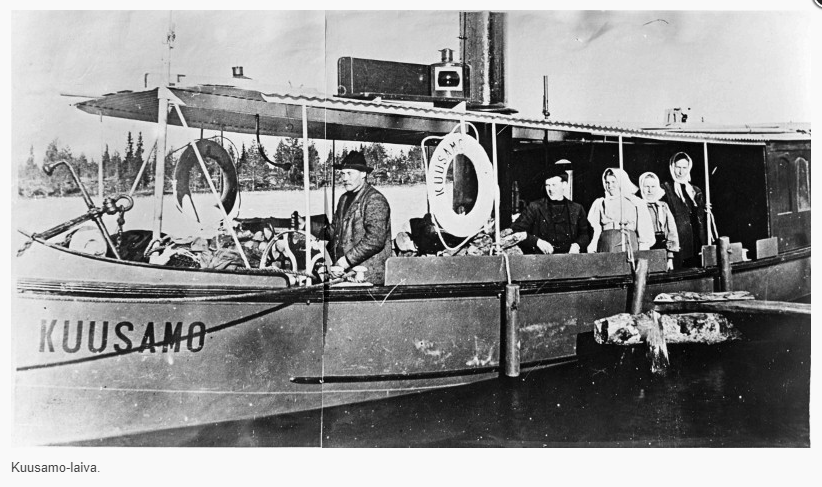Evidence of Kuusamo’s Stone Age dwellings has been found in the field of the Keinola farm on the southern shore of Lake Niskajärvi. A stone worked into a tool or a weapon and beginnings of a similar object, i.e., a stone into which a hole has been drilled, have been found.
The formation of a permanent Finnish settlement in this area began in the second half of the 17th century.
The Kuusamo region was divided into seven villages in the 18th century: the former Kitka village formed the villages of Alakitka, Vasarapärä and Posio, and Maanselkä the parish village and the villages of Lämsä, Poussu and Heikkilä. The latter included, among others, Paanajärvi, Tavajärvi, part of Suorajärvi, Vuotunki, Suininki, Kiitämäjärvi, Heikkilä and Kajavansalmi.
From the area of the old Heikkilä village in the 17th century, Antti Määttä and Olli Pohjalainen’s arrival in Vuotunki and Martti Hänninen’s arrival on the shore of Kiitämäjärvi are the first to be mentioned. At the beginning of the 18th century, two of the Määttä brothers already lived in Vuotunki, and the third brother moved to Määttälä in Suininkijärvi. In the tax list of 1767, there were already 26 homesteads in Heikkilä village, and in 1793 there were 31 of them.
Most of the village was burned in the war. The post office was set on fire, but the fire went out by itself. Similarly, the house occupied by the soldiers was spared when the fire did not spread.
